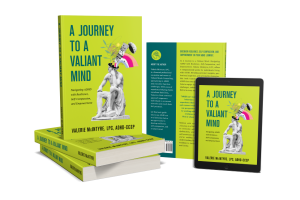 Anxiety is an emotional state characterized by feelings of unease, worry, and fear. Despite its unpleasant nature, anxiety serves an important evolutionary purpose. It is a survival mechanism that alerts us to potential danger and prompts us to take action to protect ourselves. This response to threat, commonly known as the “fight, flight or freeze” response, has helped our ancestors survive in dangerous situations.
Anxiety is an emotional state characterized by feelings of unease, worry, and fear. Despite its unpleasant nature, anxiety serves an important evolutionary purpose. It is a survival mechanism that alerts us to potential danger and prompts us to take action to protect ourselves. This response to threat, commonly known as the “fight, flight or freeze” response, has helped our ancestors survive in dangerous situations.
Our ancient ancestors lived in a world that was much different from the one we live in today. They were constantly exposed to danger from wild animals, harsh weather conditions, and other threats to their survival. In order to survive in this environment, they had to have a quick and efficient way of responding to danger. This is where the Fight, Flight, or Freeze response comes into play. Imagine that our ancestors were out gathering food in the forest and they suddenly encountered a large, dangerous animal. The Fight, Flight, or Freeze response would kick in to help them respond to the situation. In this situation, if the ancestor felt confident that they could defeat the animal in a fight, they would go into the Fight mode. They would use their muscles to physically fight the animal and defend themselves. If the ancestor felt that they were no match for the animal, they would go into the Flight mode. They would use their legs to run away from the animal as quickly as possible, in order to avoid getting hurt. If the ancestor felt completely overwhelmed and helpless, they would go into the Freeze mode. In this mode, they would try to make themselves as small and unnoticeable as possible, hoping that the animal would lose interest and leave them alone. The Fight, Flight, or Freeze response was necessary for human survival because it allowed our ancestors to respond quickly and effectively to danger. This response helped them avoid harm and stay alive, which allowed them to pass on their genes to future generations. Although the dangers we face today are different from those of our ancestors, the Fight, Flight, or Freeze response is still a part of our biology and can be triggered in response to perceived threats.
In the modern world, our mind continues to react to perceived threats in much the same way as it did in prehistoric times. Our bodies are still wired to respond to danger with the Fight, Flight, or Freeze response, which can be triggered by perceived threats, even if they are not actually life-threatening. This can result in feelings of anxiety and worry, even when there is no real danger present. For example, a person may feel anxious before an important job interview, even though the interview itself is not life-threatening. This is because their mind perceives the interview as a threat to their well-being, and the Fight, Flight, or Freeze response is triggered. This can be challenging because negative thoughts and worries can become repetitive, leading to what is known as rumination. Rumination is the persistent and repetitive focus on negative thoughts, emotions, and experiences, which has been shown to contribute to the development and maintenance of anxiety disorders. Research has shown that rumination is a significant risk factor for the development of anxiety and depression. For example, a study published in the journal “Behaviour Research and Therapy” found that individuals who ruminate more often have higher levels of anxiety and depression compared to those who ruminate less. The study concluded that rumination may play a key role in the development and maintenance of anxiety and depression. Understanding the role of rumination in anxiety and depression can help individuals develop coping strategies to manage their negative thoughts and emotions.
Rumination is a persistent and repetitive focus on negative thoughts, emotions, and experiences. It is a cognitive process that involves the repeated and prolonged thinking about negative experiences, worries, and stressors. This type of thinking is often associated with anxiety and depression and is considered a risk factor for the development of these disorders. Rumination can contribute to the development and maintenance of anxiety disorders in several ways.
First, rumination can increase the intensity and duration of negative emotions, leading to an increase in anxiety levels. When we repeatedly focus on negative thoughts and experiences, it can trigger the Fight, Flight, or Freeze response, which can result in physical symptoms such as increased heart rate, sweating, and muscle tension. Second, rumination can also interfere with problem-solving abilities, making it difficult to find solutions to the stressors and problems that we are facing. This can lead to feelings of hopelessness and helplessness, which can further increase anxiety levels. Third, rumination can also affect our perception of time. It can make time seem to slow down and make it seem as though our negative thoughts and worries will never end. This can result in increased levels of anxiety and stress.
Research has shown that individuals who ruminate more often have higher levels of anxiety and depression compared to those who ruminate less. For example, a study published in the Journal of Abnormal Psychology found that rumination was positively associated with anxiety and depression symptoms. The study concluded that rumination may play a key role in the development and maintenance of anxiety and depression. It can increase the intensity and duration of negative emotions, interfere with problem-solving abilities, affect our perception of time, and lead to feelings of hopelessness and helplessness. Many individuals may wonder why our brain seems to get stuck on negative thinking and wonder why developing positive thinking and a “go with the flow” attitude takes time and commitment to develop. The answer connects back to our evolutionary history.
Recent research has shown that the human brain is wired to pay more attention to negative information and has a negativity bias. This means that our minds tend to give more weight and importance to negative events and experiences than positive ones. This negativity bias is thought to have evolved as a survival mechanism, helping our ancestors to be alert to potential dangers and threats in their environment.
One study, published in the journal “Nature Neuroscience,” found that negative information has a stronger impact on our emotions and memories compared to positive or neutral information. The study concluded that the negativity bias is a fundamental aspect of human cognition and may play a crucial role in our ability to survive and adapt to environmental challenges.
Another study, published in the journal “Emotion,” found that the negativity bias is present in all cultures and is not specific to any particular group or demographic. The study concluded that the negativity bias is a universal aspect of human cognition and may have evolved as a survival mechanism to help us respond to potential dangers and threats in our environment.
The following TED Talk videos expand on why the human brain is wired to cling to negative information:
- “The Negative Bias in Our Brains” by Tali Sharot: https://www.ted.com/talks/tali_sharot_the_optimism_bias?language=en
- “The Power of Vulnerability” by Brené Brown: https://www.ted.com/talks/brene_brown_on_vulnerability?language=en
Recent research suggests that the human brain is wired to pay more attention to negative information and has a negativity bias. This negativity bias is thought to have evolved as a survival mechanism to help us respond to potential dangers and threats in our environment. Understanding the negativity bias can help individuals develop coping strategies to manage negative thoughts and emotions and promote mental well-being.
To help themselves get out of negative thinking, people can try several strategies. One of the most effective is to engage in mindfulness practices, such as meditation and deep breathing exercises. Mindfulness helps to quiet the mind and reduce the impact of negative thoughts. It can also help to increase awareness of one’s thoughts and feelings, allowing for a more mindful and intentional response to them. Cognitive-behavioral therapy (CBT) is another effective approach to managing anxiety. This type of therapy helps individuals to identify and challenge negative thoughts and beliefs that contribute to anxiety. CBT also teaches coping strategies, such as problem-solving and relaxation techniques, to help manage anxiety in a healthy way.Exercise and physical activity can also be beneficial for reducing anxiety. Exercise has been shown to reduce symptoms of anxiety and improve mood by increasing the release of endorphins, which are the body’s natural mood-enhancers. Exercise can also serve as a healthy outlet for stress and can help individuals manage negative thoughts and feelings. Finally, it is important to take care of oneself by getting adequate sleep, eating a balanced diet, and engaging in self-care activities. These activities can help reduce stress and improve overall well-being, which in turn can help reduce anxiety.
In conclusion, anxiety serves an important evolutionary purpose, but it can become problematic in modern times. To help reduce anxiety and negative thinking, individuals can engage in mindfulness practices, seek out therapy, exercise, and take care of their overall well-being. By implementing these strategies, individuals can take control of their thoughts and feelings and lead a more fulfilling life.






